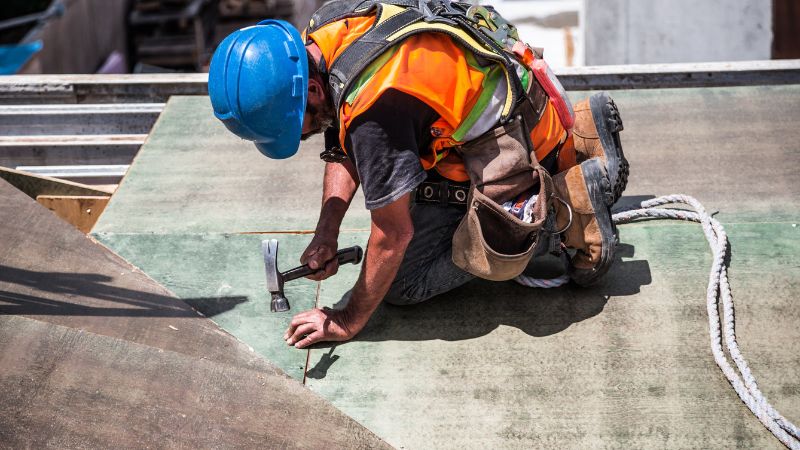Categories
How to Improve your EPC Rating: The Landlord's Guide

Why are landlords desperate to improve the EPC rating of their buy to lets?
As we move towards a greener future, the government will be changing the minimum EPC (Energy Performance Certificate) requirements for rental properties from E to C by 2025 for new rental contracts.
And by 2028, you’ll need to meet these energy requirements even for current tenants on existing contracts.
In this guide, we cover the best ways to improve your EPC rating as a landlord, the benefits of doing so, and an overview of how much it will cost.
What’s the context?
In 2021, the UK government announced their Net-zero strategy to reduce the country’s greenhouse gas emissions to zero by 2050. This ambitious climate action target could mean significant changes in regulations across the UK, affecting property owners in the next ten years.
And the government’s recent legislation on EPC ratings for domestic property could be a big hit to landlords. But while the new EPC regulations might be an unwelcome change for many, it could pay to be ahead of the curve.

Upgrading your property to improve your EPC rating early could allow you to spread out the costs over a longer timeframe and means you may avoid any unnecessary costs before the demand for these services increases.
Whether you’re looking to start work early, or simply trying to figure out the most efficient gameplan for your EPC upgrades, here’s what to expect in the next two years if you’re a landlord looking to make your property more energy efficient.
Need funding? Book a free consultation below to discuss your options.
Skip to:
What Is the Minimum EPC Rating?
What factors affect EPC rating?
How can I find my current EPC rating?
How to improve your EPC rating
How much will it cost to improve my EPC rating?
How can a good EPC rating benefit me?
Schemes to help landlords fund EPC upgrades
How else can I fund my EPC upgrades?
What is an EPC rating?
EPC rating stands for Energy Performance Certificate. It is a rating of how energy efficient a property is and is required whenever a property is built or sold.
An EPC rating is calculated by measuring how much energy a property uses per m2 and how much it loses due to factors like poor insulation. They are primarily used by prospective buyers and tenants to get an estimate of how much energy bills will cost.
With over half of the homes in the UK having an EPC rating of D or below, this legislation will mean big changes for landlords in the coming years.
While this is yet another piece of legislation making circumstances more complex for landlords, it could mean positive change for the environment, and for tenants who will benefit from more energy-efficient homes.
So, when does the government plan to enforce these rules on your EPC rating? And what can you do as a landlord to make any changes cheaper and easier in the long term?
Need funding? Book a free consultation below to discuss your options.

What is the minimum EPC Rating?
As of 2018, the current minimum EPC rating in the UK is bandE. However, in 2020 the government announced plans to raise the minimum EPC rating for private rentals to band C from 2025.
So, if your property has a band D EPC rating, you can rest assured that a significant portion of the country is right there with you. However, the government is now trying to tackle this, aiming for a positive effect on domestic carbon emissions.
This means that from December 2025, a rental property will need to have an EPC rating of C or above for a landlord to take on a new tenancy in that property. And in 2028, it will become unlawful even to have an existing tenancy on a property with an EPC rating less than C.Violating this could result in a fine of up to £5,000.
For smaller landlords who may not be aware of these legislation changes, it could be beneficial to keep an eye on these developments. As the government moves to uphold its commitments to Net-Zero, staying ahead of the curve with the changes in regulation could help landlords save money in the long run.
What factors affect EPC rating?
A lot of factors can affect your EPC rating. The most common offenders for bringing down EPC ratings are quick fixes like single-glazed windows or inefficient lighting.
However, bigger projects like poor wall or loft insulation are also common and can bring down your EPC rating substantially.
You may also find that your EPC rating is lower than you expected. There are some things that the EPC penalises especially, such as:
- little to no heating (or electric-only heating)
- little to no loft insulation
- poorly insulated walls
It’s also important to note that A ratings are usually reserved for the highest levels of energy efficiency and are not particularly common. So having an EPC rating of B or C is still considered good. In fact, band B is considered a favourable EPC rating and could mean you’ll qualify for 'green’ mortgage rates.

Why is my EPC rating so low?
One of the most common reasons that your EPC rating might be low is if you own an older building. This isn’t always the case, but it is unlikely for new builds to have a low EPC rating. Mainly because developers have access to the latest energy-saving materials and designs and because new properties under development need to follow the government’s current regulations.
This brings up some unique issues for Grade II-listed properties – many historical buildings are likely to have poor insulation due to the period they were built in (especially in the case of single-glazed windows), as well as general wear and tear. But there is specific government legislation in place to stop owners from doing work on these properties that could compromise their historical value. This overlap of regulations could put landlords of these types of buildings in a sticky position.
Related: How to get a mortgage on a Grade II listed house.
Need an EPC loan? Book a free consultation below to discuss your options.
How can I find my current EPC rating?
You can find your property’s current EPC rating using the government’s EPC checker tool. This tool allows you to search a property’s EPC band, get a list of the factors currently bringing down your EPC rating and a projection of how to fix them alongside the estimated cost of such jobs.
Research from Shawbrook stated that while 77% of UK landlords are aware of the 2025 proposals, 11% don't know anything about the requirements, and 27% don't know their properties' EPC ratings.
And reflecting this, 75% of mortgage brokers are concerned that their buy to let clients don't know enough about the EPC changes.
Keeping up to date with these changes could help landlords stay ahead of the curve with new additions to the legislation and potentially avoid price hikes if larger numbers of landlords start making energy efficiency changes closer to the deadline.
How to Improve your EPC Rating
Some cost-effective steps you can take to improve your EPC rating are:
- Install effective cavity wall & roof insulation
- Double or triple glaze your windows
- Invest in a hot water cylinder insulation jacket
- Install low energy lighting
Some of these smaller changes, such as low energy lighting, hot water cylinder insulation and double glazing could help make a substantial difference to your EPC rating without disrupting your tenants too much or taking a chunk out of your rental income.
In other cases, getting your property's EPC rating to the minimum will take more hefty investments like floor insulation and boiler replacement. But in such cases, there are government schemes that could help you achieve the minimum EPC rating.

How much will it cost to improve my EPC rating?
With D being the most common EPC rating among residential properties in the UK, it pays to have an idea of how much it’s going to cost to improve your EPC rating to a C.
- Many of these properties sit squarely in the middle of band D, so if you own one of these properties, you could expect to pay at least £5000 to get your EPC to band C.
- For many homes, the biggest EPC issues are insulation, many of which are large projects and can cost between £1500 - £6000 per upgrade. If you are stuck on where to begin with this work, the government EPC rating tool will tell you what you need to tackle first on your property, with a cost estimate for each job.
- Labour and materials for these improvements could potentially get more expensive as demand increases closer to the 2025 deadline, so starting early might be in your best interest.
If you’re unsure how to fund these improvements, we work with lenders who offer specialist EPC loans tailored to landlords looking to improve the energy efficiency ratings of their properties.
Click here to learn more about renovation finance, or give us a call on 0203 900 4322 for a no-obligation discussion with one of our team.
How can a good EPC rating benefit me?
It’s not all bad, though - owning a property with a good EPC rating can be beneficial for landlords. Many of these changes will save money in the long-term: improving your EPC rating can increase your property’s value by up to 20%.
Some may only see the drawbacks of these changes - such as the cost and inconvenience of refurbishments and the anxiety of any missed rental income from having tenants stay elsewhere while the work is being done. However, there are some advantages to making these changes, and it can even be profitable.
Properties with good EPC ratings are generally more attractive to buyers and renters because they know they will save on energy bills. You might be able to sell your rental property for more thanks to its added “green value” should you decide to do so, and you may also be able to increase the rent. On top of this, properties with an especially good EPC rating could qualify for better interest rates with a ‘Green mortgage’.
Not only this, but there is government funding available to landlords who are concerned they will struggle to afford these changes.
Schemes to help landlords fund EPC upgrades
There are schemes out there to help landlords make these changes in a way that is financially viable to them. This could be especially useful to smaller landlords, who have a lower budget for property upgrades, as well as bigger portfolio landlords who may struggle to make these changes to a large number of properties at once.
- Among these programs is the Boiler Upgrade Scheme, which can offer landlords a grant of roughly £5,000 per property to fund low carbon heating systems. However, it is important to get in early with this scheme, as it is only running until 2025 – another reason why it could be a good idea to start implementing these changes ahead of the deadline.
- If you have tenants living on your property that qualify as low-income or are claiming certain benefits, you could be eligible for government grants for that property.
- An example of this is the ECO4 scheme, which offers grants for property owners with residents on low income or allowances such as universal credit, child benefits or state pension to take the appropriate energy efficiency measures on their property.
- For properties that already have renewable energy, the government has committed to paying the owners directly for their contributions to the power grid with the Smart Export Guarantee.
There will also be zero-rate VAT on energy-saving materials until March 2027 to make these upgrades more accessible.
Need an EPC loan? Book a free consultation below to discuss your options.

How else can I fund my EPC upgrades?
Aside from government aid, one way to fund your EPC upgrades is to take out a refurbishment loan. Taking out a loan can allow you to manage the cost sustainably over a longer time period.
Spreading these home improvement costs over months can allow you to leverage more financial freedom and invest in measures that can save the most money in the long run.
For example, investing in sustainable heating systems or solar panels costs roughly £5,000 – but saves hundreds per year in bills, making it attractive to buyers and prospective tenants.
Refurbishment loans usually come in the form of a bridging loan – a type of short-term finance that can be used for a range of purposes, from upgrading residential property to buying commercial buildings.
Bridging loans can usually be arranged quickly, sometimes in as little as 5-7 working days, meaning you can finance your upgrades on a tighter schedule if you need to.
Specialist finance brokers like Clifton Private Finance have relationships with specialist lenders that you may not otherwise have access to. This can allow you to get the best rates for your loan or even more flexible terms to work around your needs and your specific circumstances.
Use our Refurbishment Finance Calculator
Our refurbishment finance calculator can get an approximate idea of what a bridging loan might cost you. But keep in mind that a mortgage broker will be able to fine-tune your expected charges to your circumstances:
Learn more about renovation finance, or give us a call on 0203 900 4322 for a no-obligation discussion with one of our team.
And if you've found this blog useful, do pass it on:










